At the end of 2018, SEGA re-released an enhanced Phantasy Star I on the Switch. An 8-bit game older than I am from a nearly forgotten system, PS1 was outdated by the time I’d played it for the first time as a teenager in the mid-2000s. And yet I felt compelled to play it through all the way then- and I think this release should be an essential playthrough for any classic RPG fan. (Which is admittedly the world’s smallest niche of people who like to suffer on purpose. You know, like fans of anything that’s classic.)
But how did I even get to the point where I was playing a game this old in the first place at that age?
The Smuggling of a Genre
In the house I lived in, I had to go down the road less-traveled for my hobbies. Like many 90s kids, I was introduced to RPGs by way of Pokemon, a game which just barely managed to sneak into my household despite its omnipresent goal of “evolution”. But for the longest time, that was as far as it could go. We were an N64 household- a PS1 and its wide collection of RPGs was well outside of the budget. And even if it wasn’t, my parents looked askance on games like Final Fantasy. It’s one thing to have pet monsters fighting each other- wars and summoning the god Shiva is something else entirely.
So I would go over to a friend’s house and marvel at their RPGs instead. I’d play games like Breath of Fire III, or Final Fantasy V, never getting too far but dreaming of the day where I could play these to my heart’s content. Eventually I bought a Gamecube, and here there were RPGs to be had! I would borrow games like Baten Kaitos, which featured winged humans facing down against the gods of death themselves. Always borrowing, not buying- a game dropped into a backpack and played while mom cooks dinner can fly under the radar.
No, it was much easier to get the latest Pokemon on a cartridge. Or play cartoony games like Mario & Luigi. The day I was able to buy a loose Golden Sun cartridge and just pop it into my GBA to play at my leisure was a landmark. Full sword and sorcery, end of the world stuff, and nobody over my shoulder on a big screen to remark on how a succubus is actually a demon from folklore and that this game is a Japanese plot to make me lose my faith in Christianity.

It was in this environment and timeframe that my friend got a copy of Phantasy Star Online for the Gamecube. PSO was everything I wanted and couldn’t have in a game. It was an action RPG, which meant my reflexes mattered and not just an endless repetition of menus. Fantasy trappings and monsters, but you’re a sci-fi soldier with laser guns and lightsabers- sorry, photon sabers. And you could play online with other people! He had bought a broadband adapter and a controller that was five times wider than it should have been on account of the giant keyboard in the middle.

It was never going to work. We had dial-up. I couldn’t possibly afford to pay the cost of 3 games in order to buy the full PSO experience. My parents didn’t want me to play games online with strangers. I’d just be stuck playing offline mode all the time. I didn’t care. I put PSO right on that Christmas list. I loved the core gameplay, repetitive as it was, and I was used to playing and replaying my games anyway.
The guy at the store asked my parents if I could even go online with it, and they immediately relented to his other helpful suggestion of Final Fantasy: Crystal Chronicles. Which is an OK action RPG in its own right. I even managed to play that one in multiplayer a couple times. It was one of the better games on the Gamecube, and I’m glad to have it. But it wasn’t PSO. So I went online and started reading, looking up the backstory to a game I didn’t have.
It wasn’t long before I found out that PSO was supposedly the successor to a much older Phantasy Star series. I say “supposedly” because it’s mostly just a few nods here and there. Some big enemies with the same name, a few references to the old setting, but there was very little of substance tying them together. Even those fancy photon sabers weren’t in the original Phantasy Star; characters fought with regular swords and daggers in a world that had interplanetary travel. But these were straws worth grasping at for me. And they had all come out on older systems like the Master System or Genesis. I didn’t need to own those consoles- just about any PC could emulate them just fine.
I could start playing these today, for free! One night while staying up late at my grandparents’ house, I downloaded Kega Fusion and the Phantasy Star I ROM, and pulled up a guide from an old fan site. Phantasy Star at last!
Revolution in a Pink Dress
It’s hard to really appreciate in 2020 how much the first game was different from the competition. In some ways 2020 still hasn’t caught up to its protagonist, honestly. But we’re so far removed from that old context of what the technology could do, or how most RPG plots worked, that you really need to unpack it all bit by bit to understand what made Phantasy Star worth talking about.
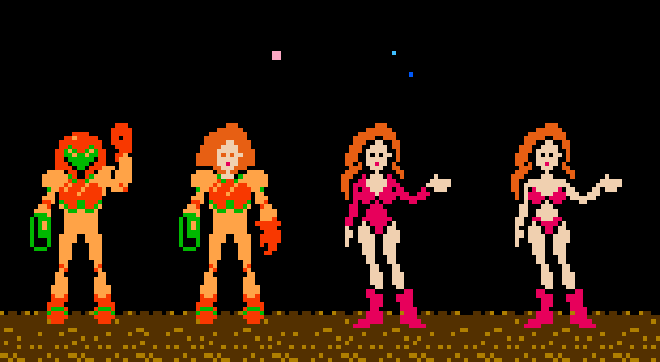
First, we need to talk about Alis (or Alisa, in Japan). Women simply weren’t the main hero in a game like this, and never like her. RPGs were dominated by generic male protagonists that you were meant to project yourself onto. Metroid, released a year earlier, is often hailed as progressive for having a female heroine. But was it really? It wasn’t committed to this at all! The American manual referred to Samus as a “he”, and in a gender-neutral way by the Japanese manual. The ambiguity was preserved by an armor suit. Most players who didn’t read the manual would have assumed Samus was male. It was only at the end that speedrunners were rewarded with Samus taking off the armor suit and showing up in a bikini. Gaming’s first major woman protagonist only brought it up for titillation.
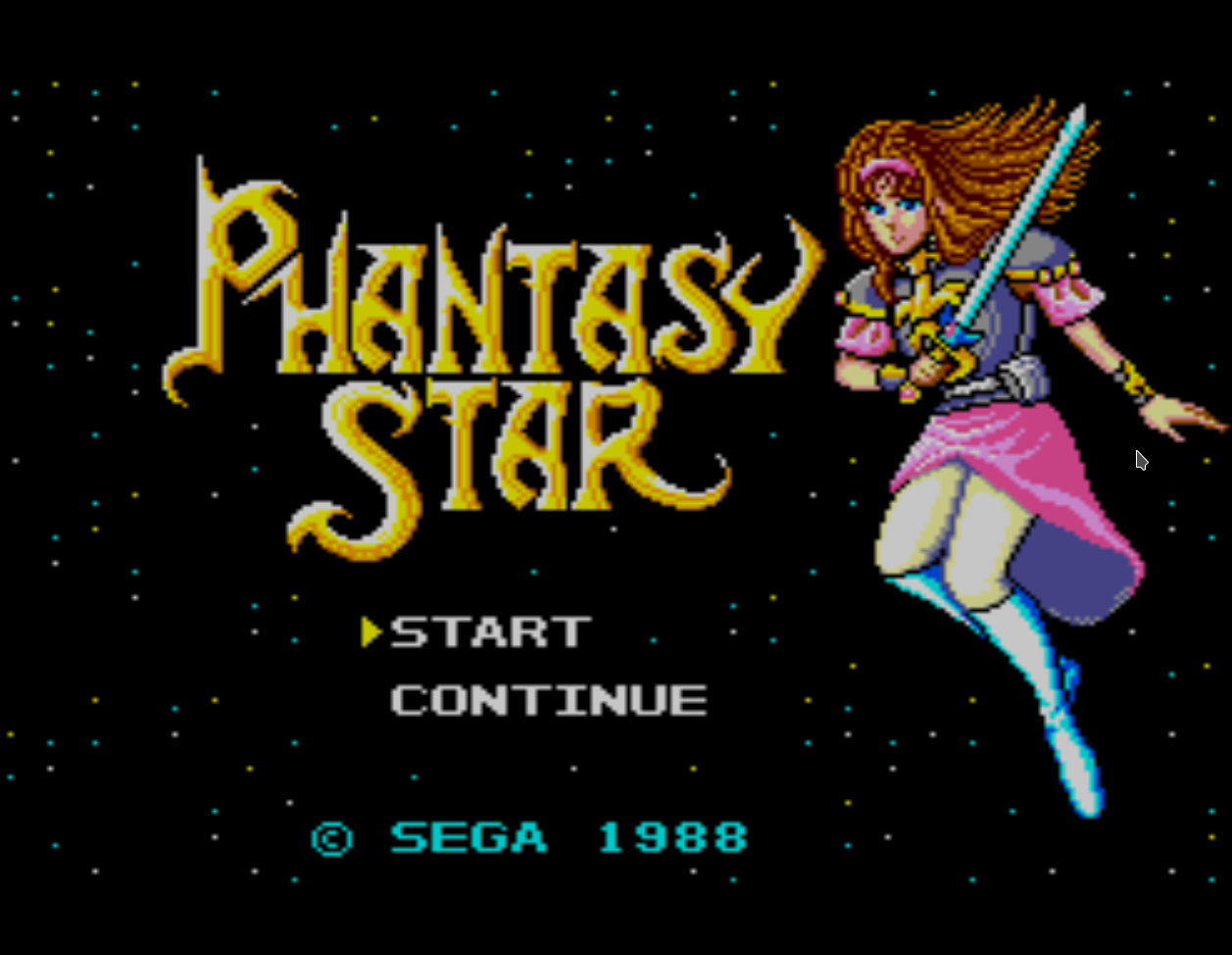
Alis wasn’t like that. The title screen immediately showed the girl in the pink dress. She had armor over it, she was carrying a sword, but Alis wasn’t going to pretend to be something else for your sake. She was allowed to be pretty without being reduced to a sex object.
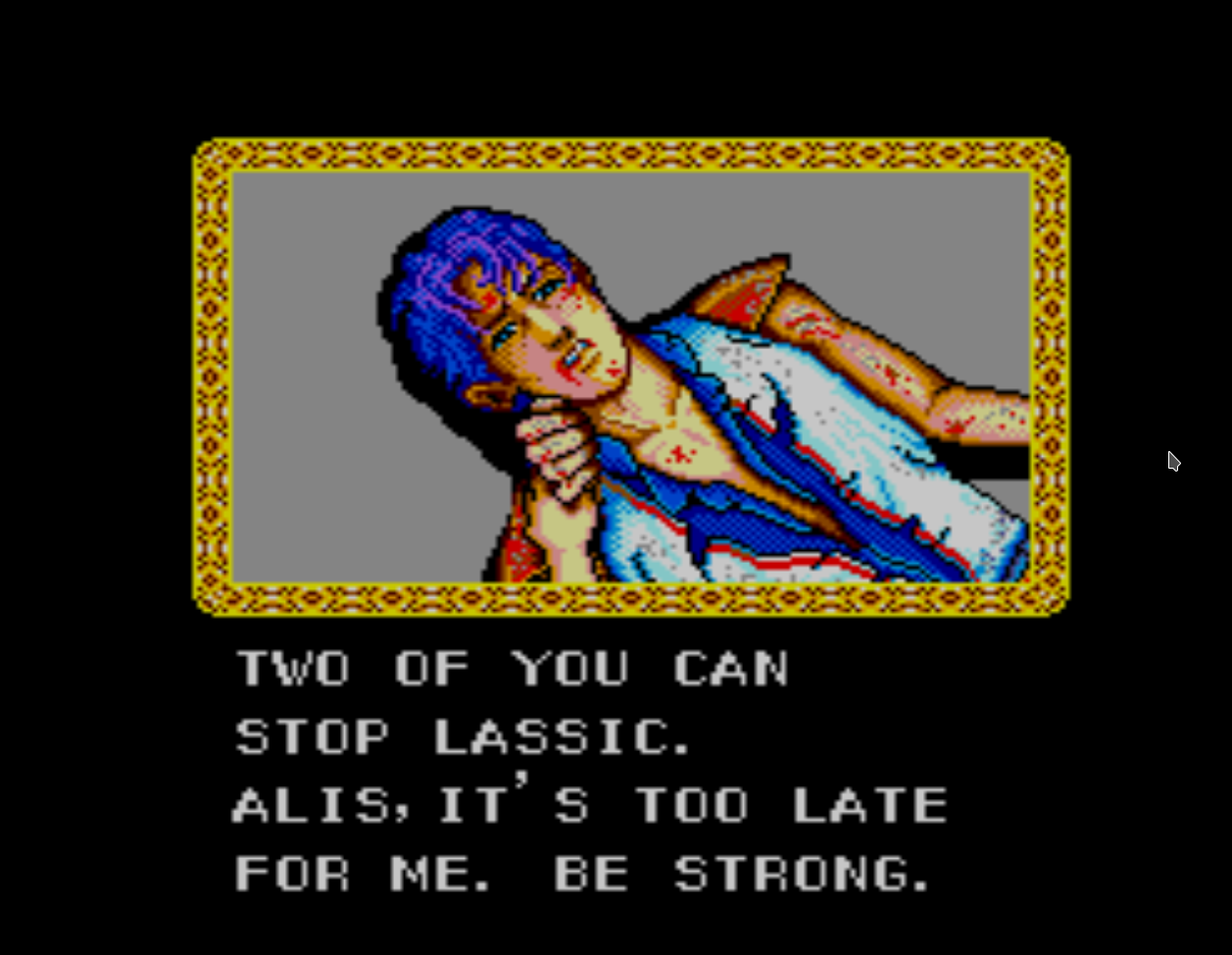
Then you start the game. Alis’s brother Nero is a blue-haired young man who would be the protagonist in almost any other game. Phantasy Star opens with him being brutally murdered by the Camineet police force for poking around in the warlock dictator Lassic’s affairs. He tells her that Lassic is going to destroy the world. And on that, she swears that Nero won’t die in vain and strikes out on a quest for revenge.
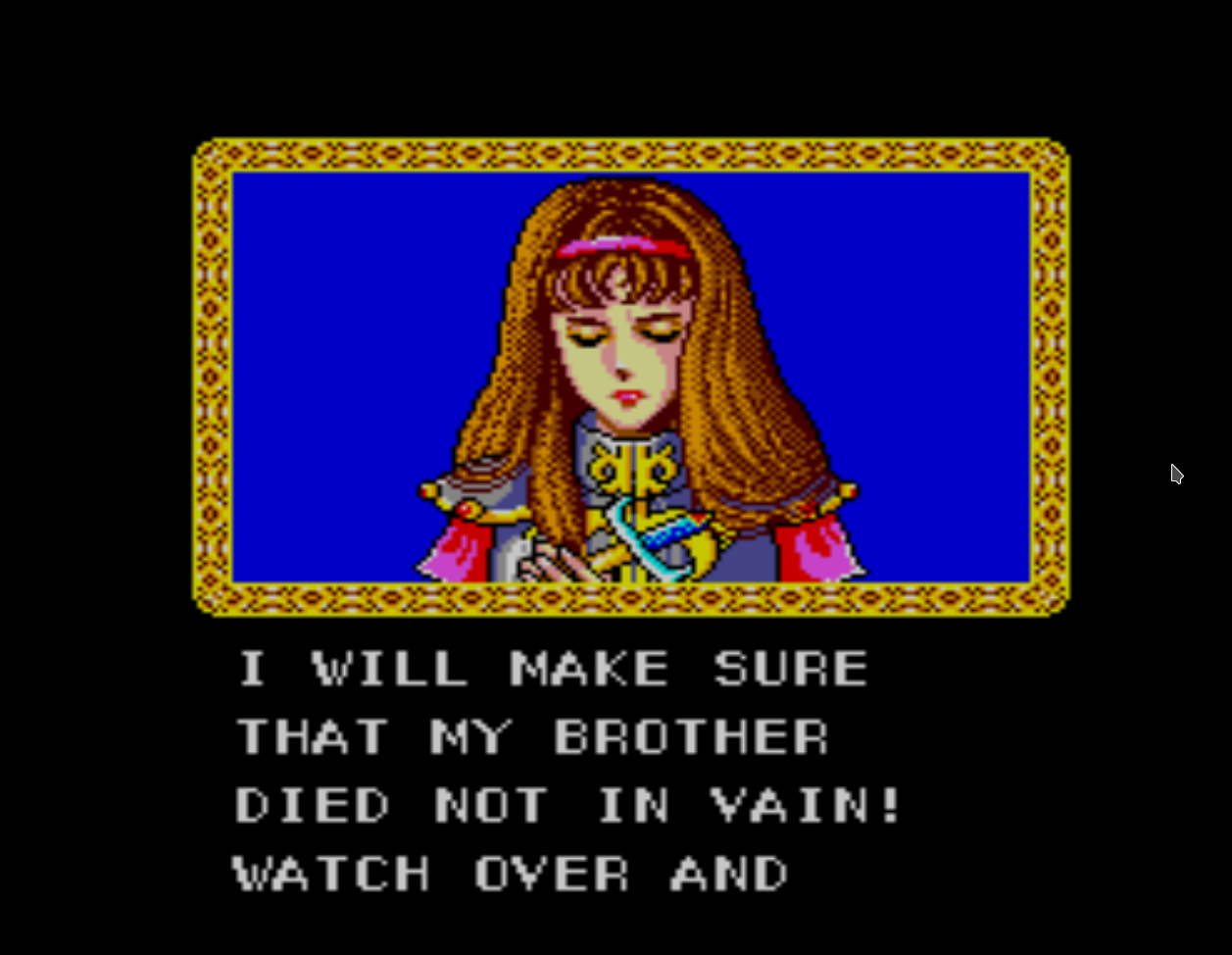
For Nero to be shown bluntly wounded, let alone for the game to openly admit that he was dying, was practically unheard of. This was the era where GI Joe went to war without ever quite managing to kill anyone. This was the era when Final Fantasy had villains like Garland proclaiming how he would “knock you all down” because we just don’t talk about death, not on a Nintendo system! It’s for the kids! But even before the Genesis, SEGA was ready to do what Nintendon’t. Your brother is dead, anyone in Lassic’s police force is a bastard, and if you get to 0 HP you’ll also be dead as a doornail. It all made for a world that had just a little bit more grit to it, a quest that had a personal element to it. Alis would probably have gone and killed Lassic even if the world wasn’t in danger. It was more grounded. Then the game started for real.
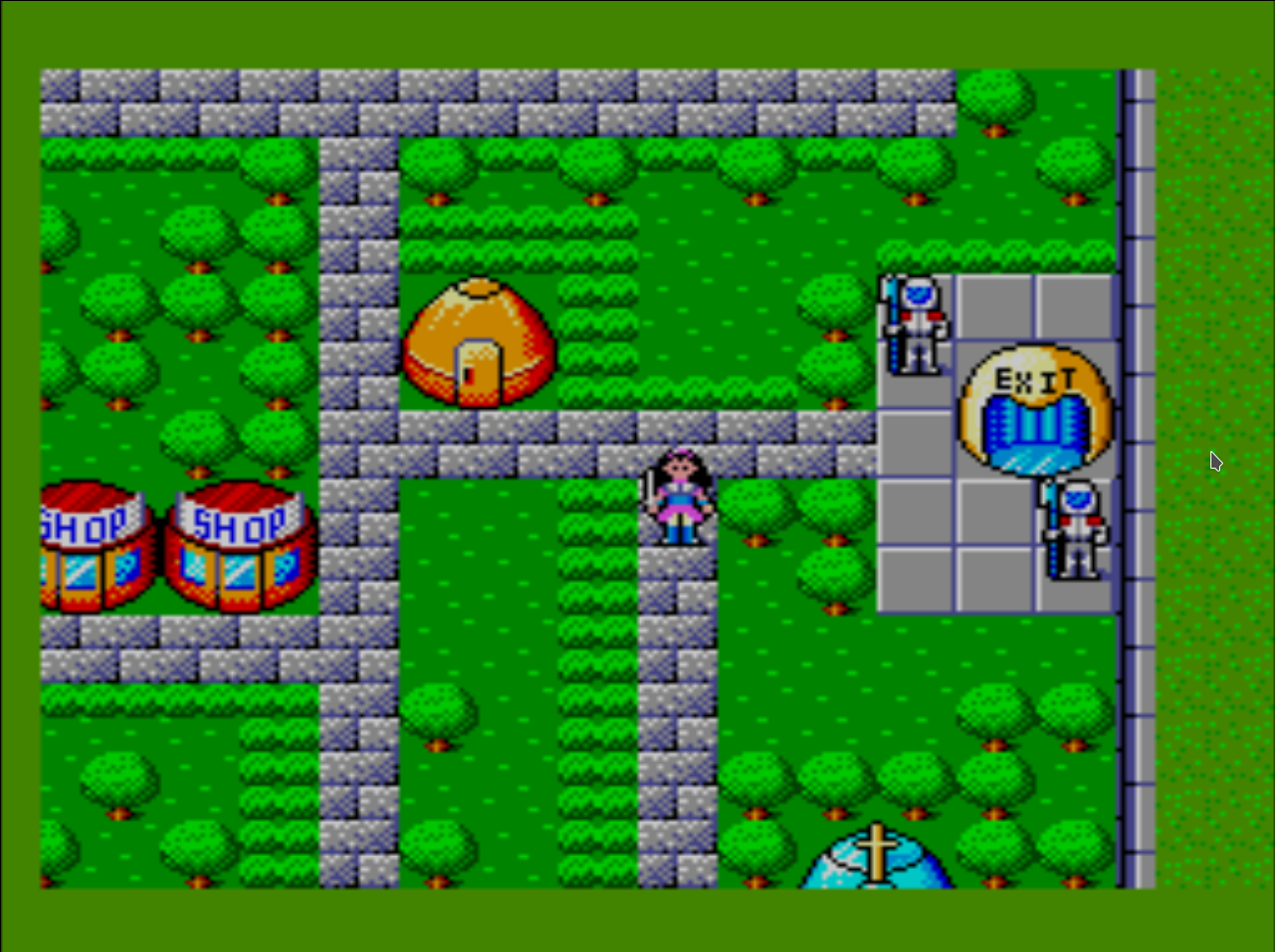

In town, we find that dungeons weren’t top-down affairs like most console RPGs, but were presented in a first-person perspective. And this is where the uniqueness can start to rub the wrong way. It’s much more difficult to maintain your orientation this way, especially across random battles- and it’s the 80s, so you’ll be fighting a lot of random battles. The encounter rate is through the roof, and you need the money and experience anyway, with hours of grinding throughout. The common solution back then was to get out a notebook and start making maps, tile by tile, to keep your bearings. I didn’t take the painstaking route- I looked up pre-made maps online. Much more convenient, but being able to avoid every trap because they’re conveniently labeled feels cheap. You’re not exploring, you’re connecting the dots.

Thankfully, that first “dungeon” in town was really just a storage warehouse to get you acquainted with the mechanics before you had to deal with fights. There weren’t any monsters to speak of to pounce on you and kill you. No, the monsters were just outside of town. The design philosophy of 80s RPGs was that grinding to pad out play time was good. Having to work the menus for an hour before it was safe to go to the next town was “difficulty” rather than “busywork” and it was a good thing! Look at how hardcore you are for dealing with this repetition. But in a twisted sort of way it worked for this game. Alis is not a trained revolutionary. Alis is a teen girl who struck out for revenge and needs to train herself in order to not get killed. No you’re rationalizing why it’s OK to spend this much time playing like this!

And then came the translation. Games back then couldn’t even translate “you won!” into something less garbled than “YOU’RE WINNER”. And while Phantasy Star’s plot wasn’t really that complicated, plenty of items and dialogue were garbled in this process. Trying to buy a black market passport would result in the rebuke “I TELL YOU NO ONE CAN DO!” Archmage Lutz became Noah, whose best armor was the “FRD. MANTLE”. FRayeD Mantle? That doesn’t seem good. And the game’s code could only handle four letters for the names of characters and spells. This was fine in Japanese where everything fits. In the US it meant that poor Alisa would never recover her full name in any game.
So, hours and hours of grinding to get through, even on turbo emulation while you listened to music. And you’d probably a guide to get through, which turned it into a guided tour version. I beat Phantasy Star once, was glad to have done so, and decided I’d never play it again. Then SEGA re-released it on Switch, and my buddy mentioned having bought that re-release but not tried it yet. I grabbed the controller from him. And to my surprise, it was genuinely fun again!
AGES
So what changed to let me recommend it again? Is this an enhanced remake that brings it into the 3D era, rewrites the script, and makes it a new experience? No, not really. They did that on the Playstation 2, actually, but I never tried it. All of the window dressing on this Switch release is exactly the same as it was when the game first came out. But the quality of life improvements bring it up to a new experience, with all the bullshit cleaned right out if you play in the new AGES mode.

AGES mode basically functions as a rebalanced ROM hack with a new HUD. The original game’s graphics are displayed in a window on the screen. All of the combat rewards are boosted up, allowing you to level up and get the money for your new gear in a fraction of the time that it took before. The encounter rate is reduced, so you aren’t being interrupted nearly every few seconds of walking around. There’s a new HP and MP display so that you don’t need to navigate menus to check your party’s current and max stats. And possibly most importantly, a new automapper builds out those dungeon maps for you as you go. You’re free once again to explore the dungeons for yourself and find every trap and treasure chest on your own, but without tedious notebook work.
I got almost halfway through the game in a single evening on that setup. Instead of going out of my way to grind, I’d just fight through every battle on the way to my next destination and get leveled up that way. I think I had one instance where I had to grind for a little bit while chatting, but for the most part it was point to point, recruiting party members and looting dungeons as fast as I could move. I’d hold off on equipment upgrades that would have been critical in the original game, saving my money to leapfrog several upgrades ahead- and I could actually afford to make those upgrades when the time came!

This really does show why those old-school games felt the need to inflict so much grinding on us. It wouldn’t have been great for developers if you could go to Blockbuster, beat the game in a single summer rental, and be done with it. RPGs were more expensive than other games for awhile, and if you could beat them in a few days then it would have been a poor investment. And in the primitive days of the 80s, grinding wasn’t seen as busywork yet. But in 2020 it’s a non-starter outside of MMOs. Thankfully, the experience is cleaner now.
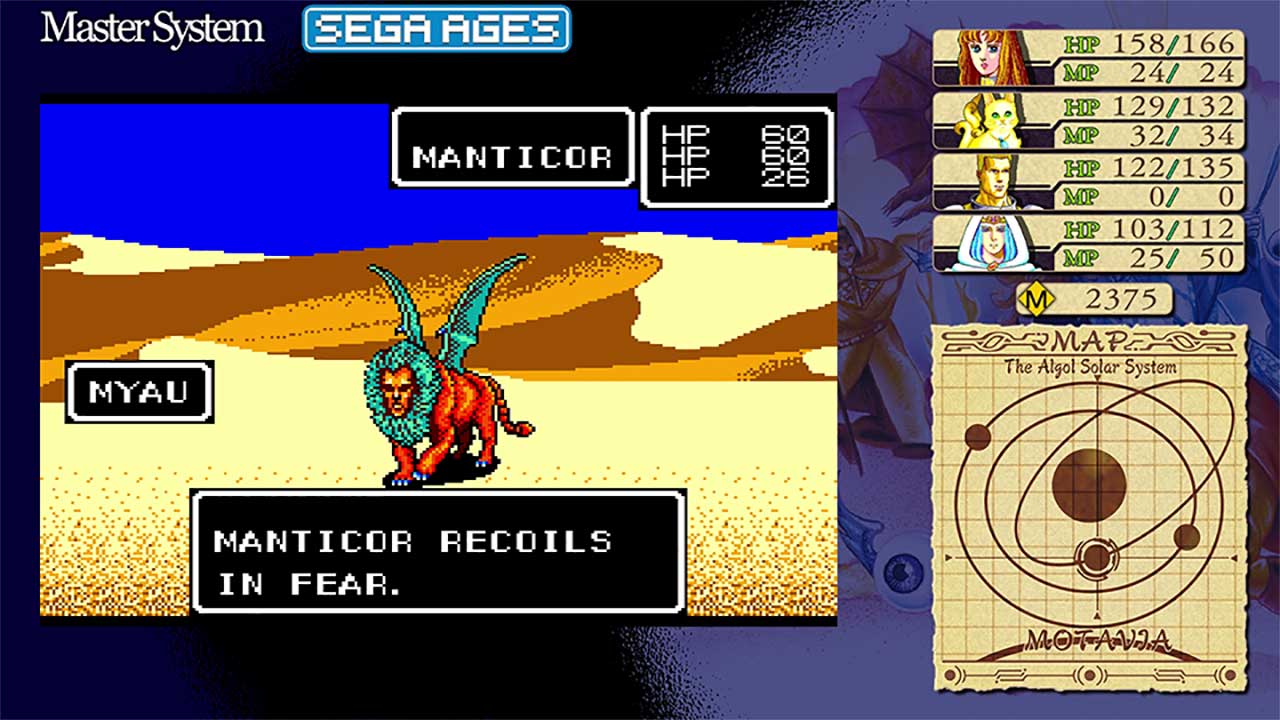
There’s even an item guide included that explains exactly what a “FRD. MANTLE” is and makes it easy to quickly see what your whole inventory is about without leaving the couch. Not to the same level as a full retranslation, but in some ways I like this better- you get to experience the same strangeness the rest of the fanbase did when we played the original.
And finally, we get to the sound. The original Master System audio was functional, but nothing too special. Typical 8-bit that you’d be used to from the NES. But in Japan, the Master System an optional add-on: the FM Sound Unit! This allowed for much higher-quality audio on games that used it, including Phantasy Star. The US never received this add-on, and I’d never heard Phantasy Star as it was intended to be heard. When I got to the title screen and heard the music, my jaw dropped. SEGA had gone so far as to take out FM support from the US release of Phantasy Star, but the Switch release puts it back in as an option. Once I heard the new audio, I could never go back.
If you have a spare weekend to kill and want to see some gaming history, I really can’t recommend this new release enough. You might still need to occasionally ask a guide for a pointer on which town to go to next, but overall I think this version brings the game back to being playable. I really hope they give a similar treatment to Phantasy Star 2 and 3 on the Genesis in the future so that the entire series (including 4) can be enjoyed by more people today.